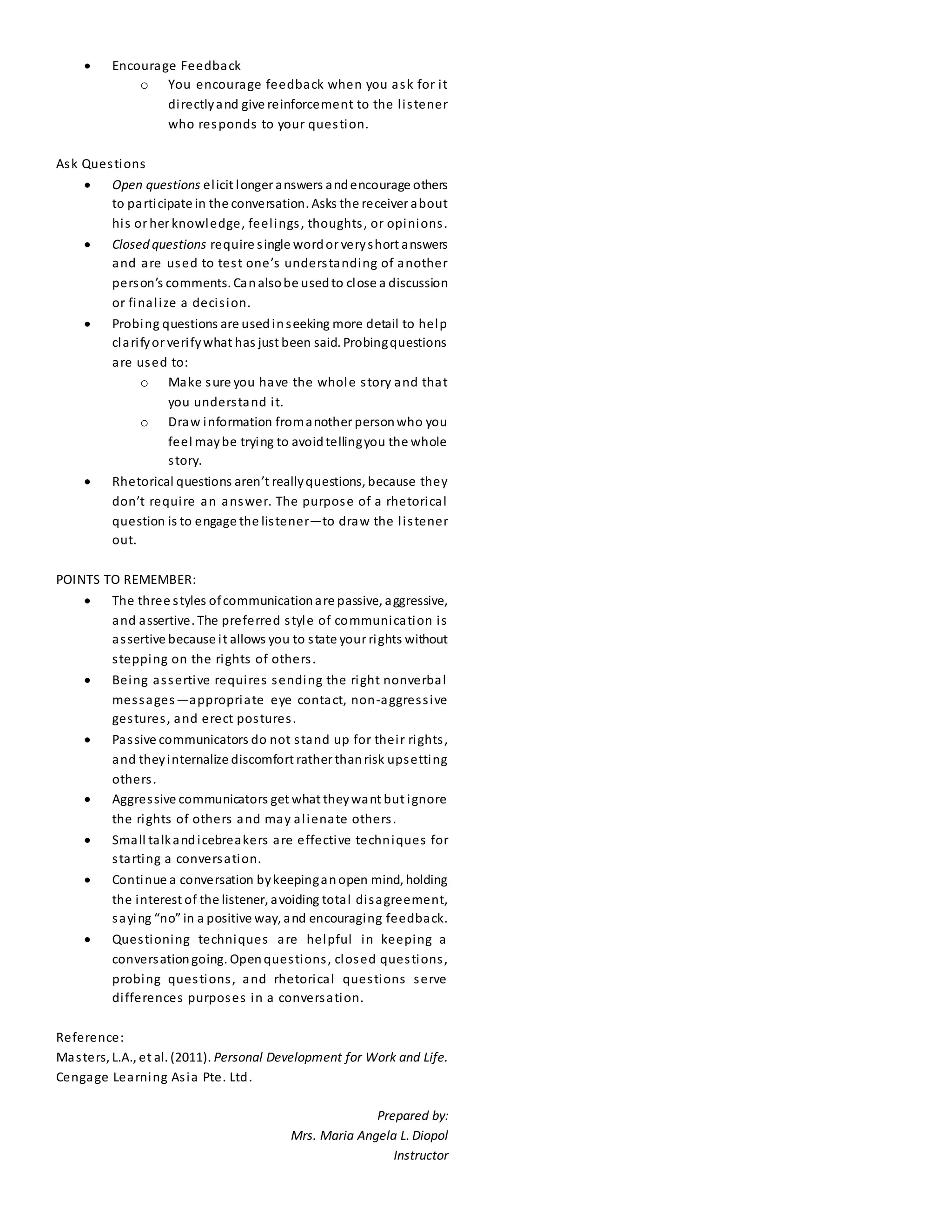This document discusses effective communication styles and techniques for conversations. It outlines three main communication styles: passive, aggressive, and assertive. Assertive communication is preferred as it allows one to state their rights while respecting others. Specific techniques are provided for starting conversations through small talk or icebreakers. The document also gives tips for maintaining conversations, such as keeping an open mind, asking questions, and providing feedback. Four types of questions - open, closed, probing, and rhetorical - can serve different purposes in guiding a discussion.

